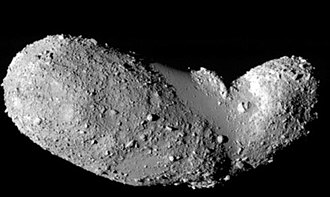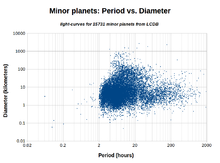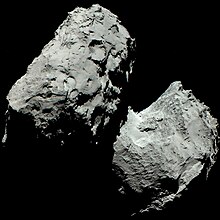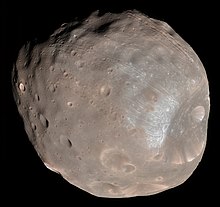Rubble pile
In astronomy, a rubble pile is a celestial body that consists of numerous pieces of debris that have coalesced under the influence of gravity.
Other asteroids, possibly including Itokawa, have been found to be contact binaries, two major bodies touching, with or without rubble filling the boundary.
Despite a fine regolith on the outside (at least to the resolution that has been seen with spacecraft), the asteroid's gravity is so weak that friction between fragments dominates and prevents small pieces from falling inwards and filling the voids.
Vesta, at least, has withstood intact one major impact since its formation and shows signs of internal structure from differentiation in the resultant crater that assures that it is not a rubble pile.
Observational evidence suggest that the cometary nucleus may not be a well-consolidated single body, but may instead be a loosely bound agglomeration of smaller fragments, weakly bonded and subject to occasional or even frequent disruptive events, although the larger cometary fragments are expected to be primordial condensations rather than collisionally derived debris as in the asteroid case.
[12][clarification needed] The moon Phobos, the larger of the two natural satellites of the planet Mars, is also thought to be a rubble pile bound together by a thin regolith crust about 100 m (330 ft) thick.



